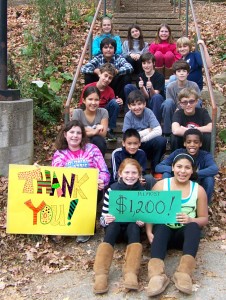In addition to our usual work in social studies, this week seemed to be full of history. The students started working in the special edition of Junior Scholastic that contained plays about major events in the world of the past and they are eager to do more of them. This kind of activity not only adds to students’ general knowledge but also builds fluency, expressiveness, and confidence for reading aloud.
We spent a couple of days learning about the Gettysburg Address in recognition of the 150th anniversary of its original delivery. We had just read in our history text about the many changes that happened in the USA in the 19th century: the rise of factories, railroads, steamboats, and improvements in agriculture. Students learned that the Northeast region became increasingly connected to the West in an economic sense, while the South remained separate. As regional differences grew (including the increased dependency on slave labor in the South), it paved the way for secession and war. This provided a context for Lincoln’s famous speech.
And we also took note of the 50th anniversary of the assassination of President Kennedy. It sparked a lot of conversations at home, apparently, and several students researched it further on their own. As is typical for this age, the many conspiracy theories and odd coincidences were much more interesting to most of our group than the other effects of this event.
We began the activity with a simple sentence on the chalkboard: On November 22, 1963, President Kennedy was assassinated. Small groups of students generated as many questions as they could, improved the wording of some of them, and narrowed their list to ones that they thought were particularly important or interesting. Will we answer all of them? Probably not, but this kind of exercise involves students more deeply than simply expecting them to be receivers or collectors of facts. (Thanks to Marie for sharing this technique with the rest of the staff recently.)
Our first math unit in our Math in Focus texts is coming to an end. Students have been working with positive whole numbers, prime factorization, common multiples, common factors, evaluating expressions, squares and square roots, cubes and cube roots, and some challenging puzzles, We’ll do a summary and review and then a chapter test when we return from Thanksgiving break, and then we’ll start working on negative numbers and absolute value. We’ll also be doing a couple of projects in math that will connect with the work we’ll be doing to learn about the Native Americans of the plains and prairie through which our wagon trains are traveling.
Math unit coming to an end, describe, starting negative numbers

